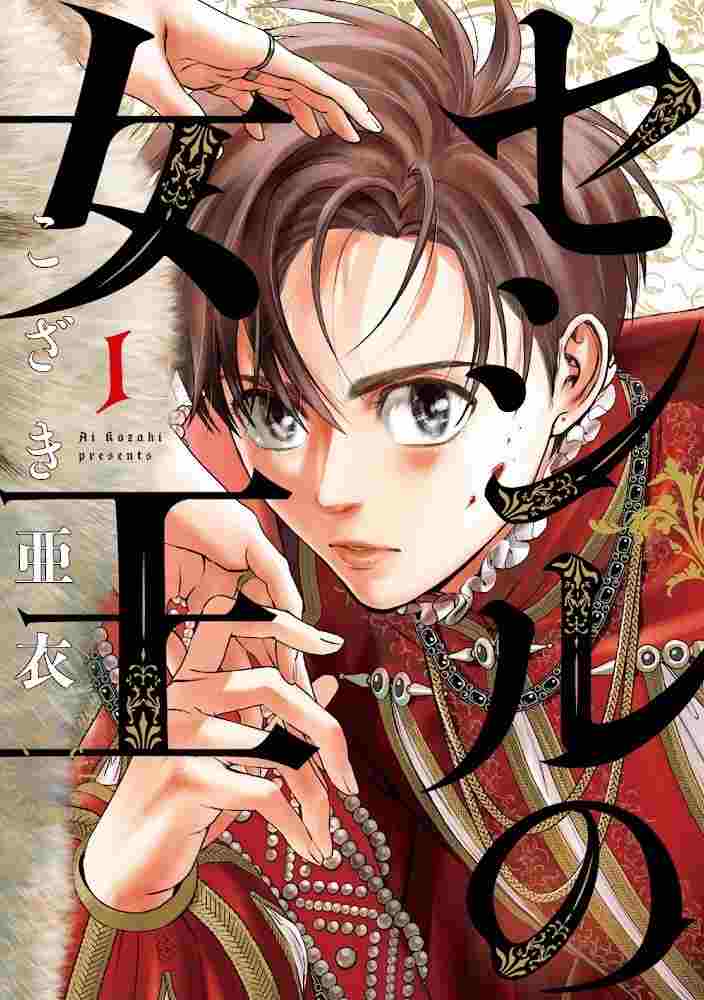
The cover of the first volume of “Cecil no Jo-o” (Cecil’s Queen)
Cecil no Jo-o (Cecil’s Queen)
by Ai Kozaki (Shogakukan)

12:00 JST, September 16, 2022
Queen Elizabeth II has passed away at 96. We tend to think of Britain as a country ruled by a queen today largely because of Queen Elizabeth II who was on the throne for 70 years, not to mention the Victorian era in the 19th century.
Elizabeth I reigned from 1558 to 1603. Prior to the 16th century, all monarchs in England were male. Women apparently had the right to succeed to the throne, but it seems female monarchs were not politically welcome in medieval times because it was believed that their marriages would likely invite invasions by foreign powers.
Elizabeth I, who never married, was a highly respected monarch and embodied the archetypal image of a queen. The path to her accession to the throne, however, was a story filled with love and hostility that left a mark in European history, and that is what the manga “Cecil no Jo-o” (“Cecil’s Queen”) depicts.
The title’s “Cecil” refers to William Cecil, a famous chancellor who supported Elizabeth’s reign. The story unfolds as the 12-year-old William, born into a powerful provincial family, dreams of becoming successful in the royal court like his father, who served as “Groom of the Wardrobe.” There is, however, unrest looming around the monarch, King Henry VIII.
The king forcibly divorces Queen Catherine, who does not bear him a son, and marries Anne Boleyn, the daughter of a poor nobleman. Since the Catholic doctrine does not allow divorce, Henry breaks ties with the Pope, and even makes plans to establish a new church (the Church of England) headed by himself.
At the royal court, people are sympathetic toward Catherine and her daughter Mary, while the reputation of Anne Boleyn, the “thieving cat,” is in tatters. But when William meets Anne in the royal garden, he understands that she is living her life the best she can amid such adversity. Anne is pregnant, and William pledges his loyalty to her and her unborn child, a future king. However, to the heavy disappointment of Anne’s royal husband and the people, the child born to the king turns out to be yet another princess.
This manga is a sordid account of life in the royal court and is rife with drama, lust and intrigue. It manages to keep itself from being too dark, thanks to William’s genuine sincerity, as when he declares, “I will crown Lady Elizabeth the queen of this country.”
The European situation at the time, which serves as the story’s background, is quite complex. Yet the explanations offered in this manga are well-paced and very easy to understand. The author, Ai Kozaki, is a talented mangaka. Her “Asahinagu,” a sports manga about girls doing the naginata martial art, became very popular. The young-adult manga rhythm and atmosphere displayed in “Asahinagu” are alive and well in “Cecil’s Queen,” too, in a positive way.
A recurring theme of “Cecil’s Queen” is women being used as a “tool for producing an heir,” which is also found in Fumi Yoshinaga’s epic alternate history manga “Ooku,” which concluded in 2020. “Ribon no Kishi” (“Princess Knight”), created by Osamu Tezuka in the 1950s, is said to be the very first serious manga for girls, and it raised the question of whether or not the protagonist, Princess Sapphire, could become a “king.”
In this sense, “Cecil’s Queen” is the latest incarnation of a theme that creators of girls’ manga have been addressing since the dawn of the field.
Cecil as a historical figure is known as an honorable politician who sometimes gave the queen unpleasant but wholesome advice. Elizabeth apparently called him her “Spirit.”
All this is so interesting, and I wonder why more mangaka hadn’t previously taken this up as a subject for manga.
This manga deserves even more attention when you consider the new forms of relationships between men and women in the 21st century.
"Culture" POPULAR ARTICLE
-

Van Cleef & Arpels Dazzles with Art Deco Artisanry at Tokyo Exhibit
-

Disney’s ‘Twisted-Wonderland’ Animated Series Puts Villains in Spotlight: New Show Features School Inspired by Classic Disney Films
-

Japan Plans to Distribute Manga Overseas Via New Platform
-

Ayumi Hamasaki’s Shanghai Concert Canceled Day Before Schedule as Part of Beijing Backlash
-

‘The World Masterpiece Theater Series’ Celebrates 50 Years; Animator Looks Back on Creating Anime Classics
JN ACCESS RANKING
-

Keidanren Chairman Yoshinobu Tsutsui Visits Kashiwazaki-Kariwa Nuclear Power Plant; Inspects New Emergency Safety System
-

Imports of Rare Earths from China Facing Delays, May Be Caused by Deterioration of Japan-China Relations
-

Tokyo Economic Security Forum to Hold Inaugural Meeting Amid Tense Global Environment
-

University of Tokyo Professor Discusses Japanese Economic Security in Interview Ahead of Forum
-

Japan Pulls out of Vietnam Nuclear Project, Complicating Hanoi’s Power Plans



◎上海の日本アニメイベント_20251129YGTGS000921_C-250x168.jpg)




















